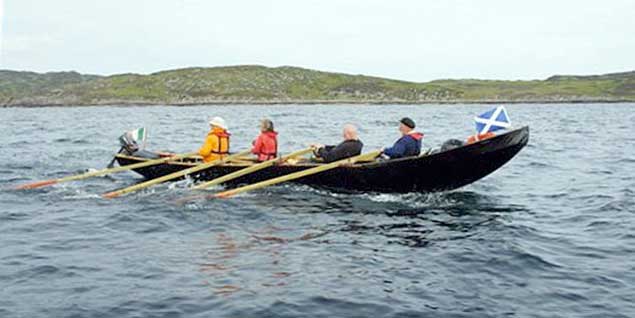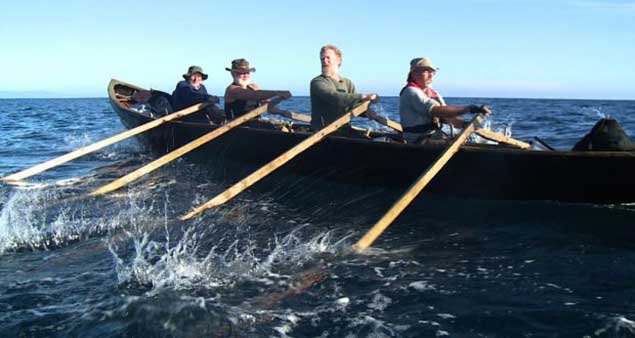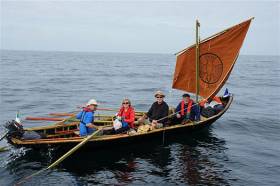Displaying items by tag: Santiago Camino
Kerry Currach Voyaging On The Santiago Camino Features on TG4
The remarkable “voyages as pilgrimages” of a Kerry naomhog (currach) have been followed with fascination by an increasing number of maritime enthusiasts ever since the founding crew of Breandan Begley, Anne Bourke, Danny Sheehy and Liam Holden rowed, sailed and very occasionally outboard-motored the little vessel the whole way from southwest Ireland to the holy island of Iona in Scotland four year ago writes W M Nixon.
They brought with them the gift of a translation of the bible in Irish – a publication which apparently had been lacking in the Iona library.
For most sailors, that direct delivery would have been quite enough for one year. But in fact when the naomhog finally returned to Kerry, she’d completed a voyage round Ireland, having returned via the east and south coasts.
 It wasn’t all easy sailing by any means. Much of the voyage to Iona and back round Ireland was achieved by muscle power. Photo Mark Tierney
It wasn’t all easy sailing by any means. Much of the voyage to Iona and back round Ireland was achieved by muscle power. Photo Mark Tierney
Once this was achieved, the idea of undertaking the ultimate European Atlantic seaboard pilgrimage voyage – from Ireland to Santiago Compostela in northwest Spain under sail and oar only – began to take shape, and last summer they completed it after two stages. They were accompanied by Paddy Barry’s 45ft cruiser Ar Seachran as mothership, though the little vessel made the long hops – with an overwinter in Brittany – entirely under her own steam.
In classic Camino style, it has been a picaresque venture, with some crew changes and new folk met at different times. Everyone involved has a strong association with Irish music, and by the time they got to Santiago their crew included Oscar-winning Dublin musician Glen Hansard, moving one of his shimates to comment that “having Glen Hansard rowing at sea was like bringing Shergar to plough a field”.
 Getting your shoulders into it – Glen Hansard (second right) doing his bit off the coast of Spain
Getting your shoulders into it – Glen Hansard (second right) doing his bit off the coast of Spain
Happily for the rest of us, a three-part TG4 series has been made on the entire venture, and the first part airs this Sunday (February 19th) at 8.30pm, while for those who miss that particular bus, there’s a repeat on Monday February 20th at 7.30pm, with the same programming being continued for the next two weekends. Check out the weblink here
As for Paddy Barry, his extraordinary lifetime of combining cruising to remote regions with some very challenging mountaineering has been encapsulated in a live show, Sailing to Mountains & Other Cold Places, which he’ll be giving to the Irish Mountaineering Club at the Teachers’ Club, Parnell Square, Dublin 1 on Thursday, February 23rd February, and in the Maritime Museum in Dun Laoghaire on Thursday April 20th.
Meanwhile his own seafaring plans are undergoing change, as he has returned to his roots with the acquisition of a 27ft Galway Hooker gleotoig in Connemara, while his alloy-built Frers 45 Ar Seachran, a veteran of international Two Ton racing which he then very successfully used for high latitude voyaging, is now on the market.
 Paddy Barry’s Frers 45 Ar Seachran at Poolbeg in Dublin after returning from a voyage to Greenland. Photo Tony Brown
Paddy Barry’s Frers 45 Ar Seachran at Poolbeg in Dublin after returning from a voyage to Greenland. Photo Tony Brown






























































